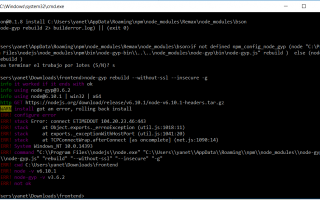redux-saga is a library that aims to make application side effects (i.e. asynchronous things like data fetching and impure things like accessing the browser cache) easier to manage, more efficient to execute, easy to test, and better at handling failures.
The mental model is that a saga is like a separate thread in your application that’s solely responsible for side effects. redux-saga is a redux middleware, which means this thread can be started, paused and cancelled from the main application with normal redux actions, it has access to the full redux application state and it can dispatch redux actions as well.
It uses an ES6 feature called Generators to make those asynchronous flows easy to read, write and test. (if you’re not familiar with them here are some introductory links) By doing so, these asynchronous flows look like your standard synchronous JavaScript code. (kind of like async/await, but generators have a few more awesome features we need)
You might’ve used redux-thunk before to handle your data fetching. Contrary to redux thunk, you don’t end up in callback hell, you can test your asynchronous flows easily and your actions stay pure.
Getting started
Install
$ npm install --save redux-saga
or
$ yarn add redux-saga
Alternatively, you may use the provided UMD builds directly in the <script> tag of an HTML page. See this section.
Usage Example
Suppose we have a UI to fetch some user data from a remote server when a button is clicked. (For brevity, we’ll just show the action triggering code.)
class UserComponent extends React.Component {
...
onSomeButtonClicked() {
const { userId, dispatch } = this.props
dispatch({type: 'USER_FETCH_REQUESTED', payload: {userId}})
}
...
}
The Component dispatches a plain Object action to the Store. We’ll create a Saga that watches for all USER_FETCH_REQUESTEDactions and triggers an API call to fetch the user data.
sagas.js
import { call, put, takeEvery, takeLatest } from 'redux-saga/effects'
import Api from '...'
// worker Saga: will be fired on USER_FETCH_REQUESTED actions
function* fetchUser(action) {
try {
const user = yield call(Api.fetchUser, action.payload.userId);
yield put({type: "USER_FETCH_SUCCEEDED", user: user});
} catch (e) {
yield put({type: "USER_FETCH_FAILED", message: e.message});
}
}
/*
Starts fetchUser on each dispatched `USER_FETCH_REQUESTED` action.
Allows concurrent fetches of user.
*/
function* mySaga() {
yield takeEvery("USER_FETCH_REQUESTED", fetchUser);
}
/*
Alternatively you may use takeLatest.
Does not allow concurrent fetches of user. If "USER_FETCH_REQUESTED" gets
dispatched while a fetch is already pending, that pending fetch is cancelled
and only the latest one will be run.
*/
function* mySaga() {
yield takeLatest("USER_FETCH_REQUESTED", fetchUser);
}
export default mySaga;
To run our Saga, we’ll have to connect it to the Redux Store using the redux-saga middleware.
main.js
import { createStore, applyMiddleware } from 'redux'
import createSagaMiddleware from 'redux-saga'
import reducer from './reducers'
import mySaga from './sagas'
// create the saga middleware
const sagaMiddleware = createSagaMiddleware()
// mount it on the Store
const store = createStore(
reducer,
applyMiddleware(sagaMiddleware)
)
// then run the saga
sagaMiddleware.run(mySaga)
// render the application
Documentation
- Introduction
- Basic Concepts
- Advanced Concepts
- Recipes
- External Resources
- Troubleshooting
- Glossary
- API Reference
Translation
Using umd build in the browser
There is also a umd build of redux-saga available in the dist/ folder. When using the umd build redux-saga is available as ReduxSaga in the window object. This enables you to create Saga middleware without using ES6 import syntax like this:
var sagaMiddleware = ReduxSaga.default()
The umd version is useful if you don’t use Webpack or Browserify. You can access it directly from unpkg.
The following builds are available:
Important! If the browser you are targeting doesn’t support ES2015 generators, you must transpile them (i.e. with babel plugin) and provide a valid runtime, such as the one here. The runtime must be imported before redux-saga:
import 'regenerator-runtime/runtime' // then import sagaMiddleware from 'redux-saga'
Building examples from sources
$ git clone https://github.com/redux-saga/redux-saga.git $ cd redux-saga $ npm install $ npm test
Below are the examples ported (so far) from the Redux repos.
Counter examples
There are three counter examples.
counter-vanilla
Demo using vanilla JavaScript and UMD builds. All source is inlined in index.html.
To launch the example, open index.html in your browser.
Important: your browser must support Generators. Latest versions of Chrome/Firefox/Edge are suitable.
counter
Demo using webpack and high-level API takeEvery.
$ npm run counter # test sample for the generator $ npm run test-counter
cancellable-counter
Demo using low-level API to demonstrate task cancellation.
$ npm run cancellable-counter
Shopping Cart example
$ npm run shop # test sample for the generator $ npm run test-shop
async example
$ npm run async # test sample for the generators $ npm run test-async
real-world example (with webpack hot reloading)
$ npm run real-world # sorry, no tests yet
TypeScript
Redux-Saga with TypeScript requires DOM.Iterable or ES2015.Iterable. If your target is ES6, you are likely already set, however, for ES5, you will need to add it yourself. Check your tsconfig.json file, and the official compiler optionsdocumentation.
Logo
You can find the official Redux-Saga logo with different flavors in the logo directory.
Redux Saga chooses generators over async/await
A few issues have been raised asking whether Redux saga plans to use async/await syntax instead of generators.
We will continue to use generators. The primary mechanism of async/await is Promises and it is very difficult to retain the scheduling simplicity and semantics of existing Saga concepts using Promises. async/await simply don’t allow for certain things – like i.e. cancellation. With generators we have full power over how & when effects are executed.



